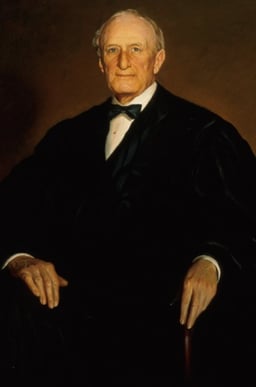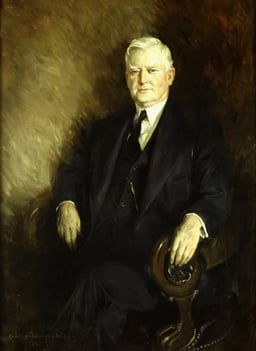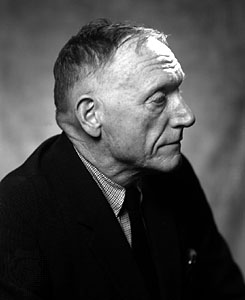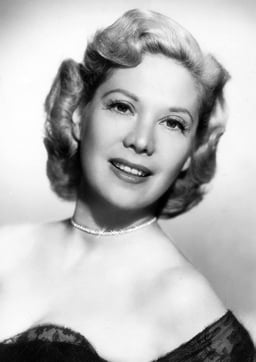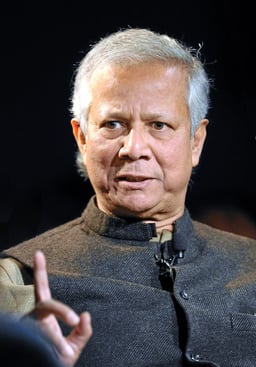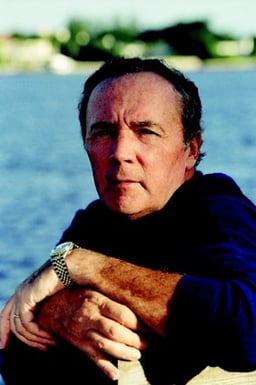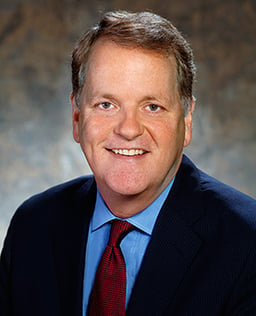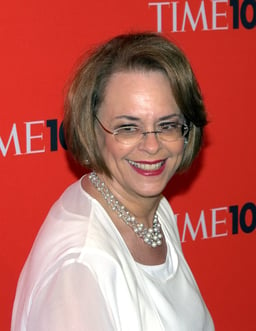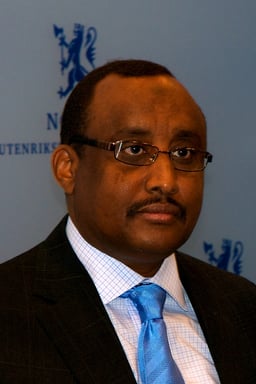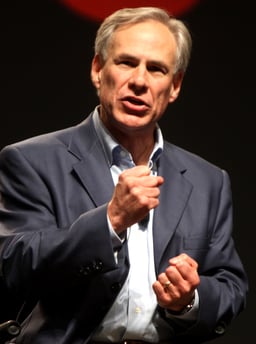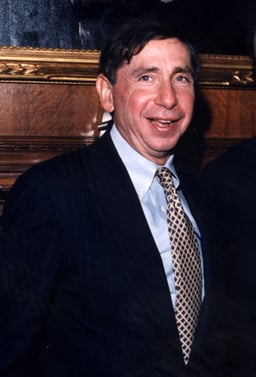Vanderbilt University

Vanderbilt University

Former name | Central University (1873-1877) |
|---|---|
| Type | Private |
| Established | 1873 |
Academic affiliations |
|
| Endowment | $6.4 billion (2019)[4] |
| Chairman | Bruce R. Evans |
| Chancellor | Susan Wente |
| Provost | Susan Wente |
Academic staff | 4,102[5] |
| Students | 12,824 (Fall 2018)[6] |
| Undergraduates | 6,861 (Fall 2018)[6] |
| Postgraduates | 5,963 (Fall 2018)[6] |
| Location | Nashville ,,United States 36°08′55″N 86°48′18″W [332] |
| Campus | Urban, 330 acres (1.3 km2) |
| Colors | Black, gold[7] |
| Nickname | Commodores |
Sporting affiliations | NCAA Division I
|
| Mascot | Mr. Commodore (Mr. C) |
| Website | www.vanderbilt.edu [333] |
| University rankings | |
| National | |
| ARWU[137] | 32 |
| Forbes[138] | 27 |
| Times/WSJ[139] | 17 |
| U.S. News & World Report[140] | 15 |
| Washington Monthly[141] | 44 |
| Global | |
| ARWU[142] | 55 |
| QS[143] | 200 |
| Times[144] | 116 |
| U.S. News & World Report[145] | 74 |
Vanderbilt University (informally Vandy or VU) is a private research university in Nashville, Tennessee. Founded in 1873, it was named in honor of New York shipping and rail magnate Cornelius Vanderbilt, who provided the school its initial $1-million endowment despite having never been to the South. Vanderbilt hoped that his gift and the greater work of the university would help to heal the sectional wounds inflicted by the Civil War.[8]
Vanderbilt enrolls approximately 12,800 students from all 50 U.S. states and over 100 foreign countries in four undergraduate and six graduate and professional schools. The university is in the process of converting its residence halls into an academic residential college system.[9][10] Several research centers and institutes are affiliated with the university, including the Robert Penn Warren Center for the Humanities, the Freedom Forum First Amendment Center, and Dyer Observatory. Vanderbilt University Medical Center, formerly part of the university, became a separate institution in 2016. With the exception of the off-campus observatory, all of the university's facilities are situated on its 330-acre (1.3 km2) campus in the heart of Nashville, 1.5 miles (2.4 km) from downtown. Despite its urban surroundings, the campus itself is a national arboretum and features over 300 different species of trees and shrubs.
The Fugitives and Southern Agrarians were based at the university in the first half of the 20th century and helped revive Southern literature among others.[11][12] The Jean and Alexander Heard Library, the campus library system, contains over 8 million items across ten libraries and stands as one of the nation's top research libraries.[13] Vanderbilt Television News Archive holds the most extensive collection of television news coverage in the world, with over 40,000 hours of content.[14] BioVU, Vanderbilt's DNA databank, is one of the largest of its kind in the world, running over 200 ongoing projects and holding over 225,000 samples.[15] Additionally, Vanderbilt's Institute for Space and Defense Electronics, the largest of its type in the world, provides integral support to several companies, agencies, and governmental units, including Boeing, NASA, and the United States Department of Defense.[16]
Vanderbilt has many distinguished alumni and affiliates, including 45 current and former members of the United States Congress, 17 U.S. Ambassadors, 13 governors, ten billionaires, seven Nobel Prize laureates, two Vice Presidents of the United States, and two U.S. Supreme Court Justices. Other notable alumni include Rhodes Scholars, Pulitzer Prize winners, Academy Award winners, Grammy Award winners, MacArthur Fellows, CEOs of Fortune 500 companies, heads of state and other leaders in foreign government, academics, musicians, professional athletes, and Olympians.[17] Vanderbilt has more than 139,000 alumni, with 40 alumni clubs established worldwide.[18]
Vanderbilt is a founding member of the Southeastern Conference and has been the conference's only private school for a half-century.[19]
Former name | Central University (1873-1877) |
|---|---|
| Type | Private |
| Established | 1873 |
Academic affiliations |
|
| Endowment | $6.4 billion (2019)[4] |
| Chairman | Bruce R. Evans |
| Chancellor | Susan Wente |
| Provost | Susan Wente |
Academic staff | 4,102[5] |
| Students | 12,824 (Fall 2018)[6] |
| Undergraduates | 6,861 (Fall 2018)[6] |
| Postgraduates | 5,963 (Fall 2018)[6] |
| Location | Nashville ,,United States 36°08′55″N 86°48′18″W [332] |
| Campus | Urban, 330 acres (1.3 km2) |
| Colors | Black, gold[7] |
| Nickname | Commodores |
Sporting affiliations | NCAA Division I
|
| Mascot | Mr. Commodore (Mr. C) |
| Website | www.vanderbilt.edu [333] |
| University rankings | |
| National | |
| ARWU[137] | 32 |
| Forbes[138] | 27 |
| Times/WSJ[139] | 17 |
| U.S. News & World Report[140] | 15 |
| Washington Monthly[141] | 44 |
| Global | |
| ARWU[142] | 55 |
| QS[143] | 200 |
| Times[144] | 116 |
| U.S. News & World Report[145] | 74 |
History
Founding and early years

Cornelius Vanderbilt
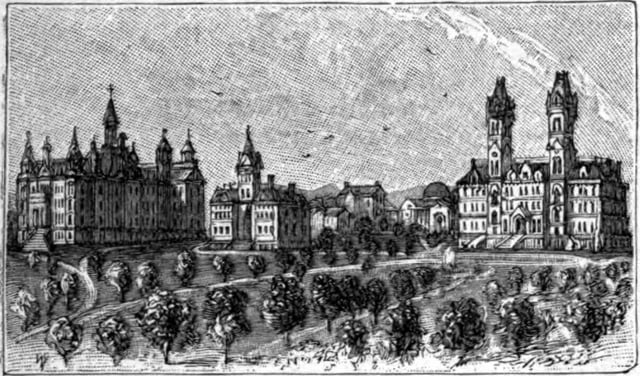
Drawing of Vanderbilt University's Main Campus from Appletons' Cyclopedia of American Biography (1889)
In the years prior to the American Civil War of 1861–1865, the Methodist Episcopal Church South had been considering the creation of a regional university for the training of ministers in a location central to its congregations.[20] Following lobbying by Nashville bishop Holland Nimmons McTyeire, church leaders voted to found "The Central University of the Methodist Episcopal Church, South" in Nashville in 1872.[20][21] However, lack of funds and the ravaged state of the Reconstruction Era South delayed the opening of the college.[20]
The following year, McTyeire stayed at the New York City residence of Cornelius Vanderbilt, whose second wife was Frank Armstrong Crawford Vanderbilt (1839–1885), a cousin of McTyeire's wife, Amelia Townsend McTyeire (1827–1891); both women were from Mobile, Alabama.[22][23][24] Cornelius Vanderbilt, who was the wealthiest man in the United States at the time, was considering philanthropy as he was at an advanced age. He had been planning to establish a university on Staten Island, New York, in honor of his mother.[20] However, McTyeire convinced him to donate $500,000 to endow Central University in order to "contribute to strengthening the ties which should exist between all sections of our common country."[20][25]
The endowment was eventually increased to $1 million (roughly $20 million in 2015 dollars[26]) and would be only one of two philanthropic causes financially supported by Vanderbilt. Though he never expressed any desire that the university be named after himself,[20] McTyeire and his fellow trustees rechristened the school in his honor. Vanderbilt died in 1877 without seeing the school named after him.[20][27] They acquired land formerly owned by Texas Senator John Boyd (who chose to patronize the establishment of Trinity University, a Presbyterian university in San Antonio, Texas, instead), later inherited by his granddaughter and her husband, Confederate Congressman Henry S. Foote, who had built Old Central, a house still standing on campus.[28]
The first building, Main Building, later known as Kirkland Hall, was designed by William Crawford Smith, a Confederate veteran who also designed the Parthenon; its construction began in 1874.[29][30] In the fall of 1875, about 200 students enrolled at Vanderbilt, and in October the university was dedicated.[20] Bishop McTyeire was named Chairman of the Board of Trust for life by Vanderbilt as a stipulation of his endowment.[20] McTyeire named Landon Garland (1810–1895), his mentor from Randolph-Macon College in Virginia and then-Chancellor of the University of Mississippi, as chancellor. As chancellor, he shaped the school's structure and hired the school's faculty, many of whom were renowned scholars in their respective fields.[25] However, most of this faculty left after disputes with Bishop McTyeire, including over pay rates.[20] When the first fraternity chapter, Phi Delta Theta, was established on campus in 1876, it was shut down by the faculty, only to be reestablished as a secret society in 1877.[31] Meanwhile, Old Gym, designed by Dutch-born architect Peter J. Williamson, was built in 1879–1880.[30] By 1883, the Board of Trust passed a resolution allowing fraternities on campus, and more chapters were established in 1884.[31]
Connections to slavery
Many of the university's early leaders had prominent ties to slavery and the Confederacy before the Civil War. Frank Vanderbilt was "a Confederate sympathizer" during the Civil War.[32] McTyeire was born into a slave-owning family and authored an essay in favor of slavery.[33] Garland owned "up to 60 slaves" before the Civil War.[33]
One of the founding trustees, Hezekiah William Foote, was a Confederate veteran and the owner of four plantations in Mississippi, including Mount Holly.[34] The Treasurer of the Board of Trust from 1872 to 1875, Alexander Little Page Green, whose portrait hangs in Kirkland Hall,[35] was a Methodist preacher and a former slave owner.[36] His son-in-law, Robert A. Young, was a Methodist minister who served as the Financial Secretary on the Board of Trust from 1874 to 1882, retiring from the board in 1902.[29] The Elliston family, who owned slaves, donated some of their Burlington Plantation, in one of the first expansions of the campus.[37]
Split with the Methodist Church
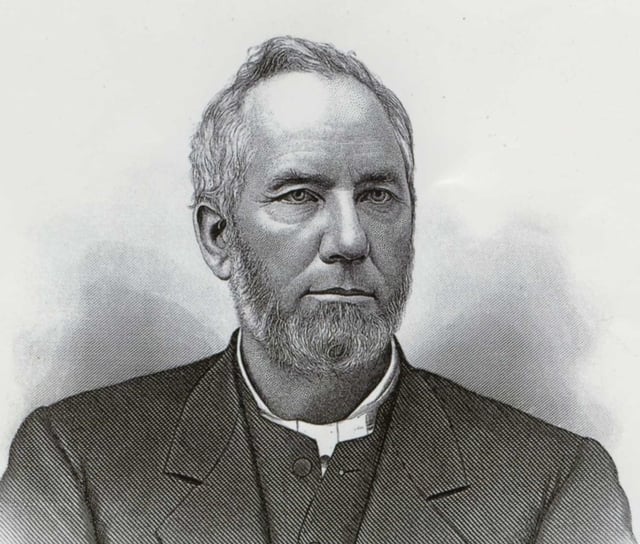
Bishop Holland McTyeire
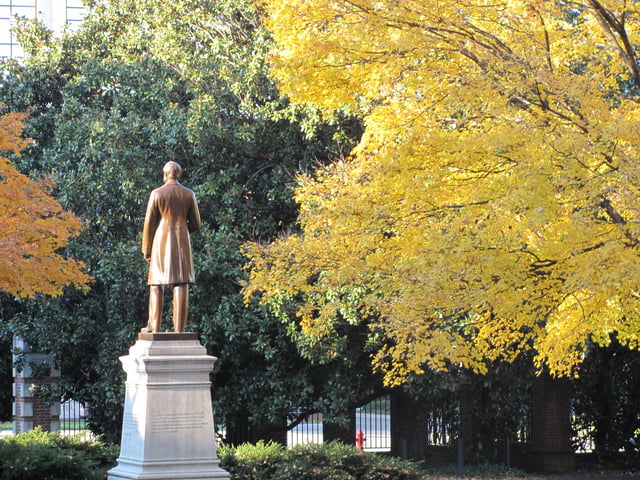
Main Campus, looking toward West End Avenue
During the first 40 years, the Board of Trust, and therefore the university, was under the control of the General Conference (the governing body) of the Methodist Episcopal Church, South.[20] Tension grew between the university administration and the Conference over the future of the school, particularly over the methods by which members of the Vanderbilt Board of Trust would be chosen, and the extent that non-Methodists could teach at the school.[20]
In 1905, Kirkland Hall burnt down, only to be rebuilt shortly after.[30] Meanwhile, the Board of Trust voted to limit Methodist representation on the board to just five bishops.[20] Former faculty member and bishop Elijah Hoss led a group attempting to assert Methodist control.[20] In 1910, the board refused to seat three Methodist bishops.[20] The Methodist Church took the issue to court and won at the local level. On March 21, 1914, the Tennessee Supreme Court ruled that the Commodore, and not the Methodist Church, was the university's founder and that the board could therefore seat whomever it wished.[20] The General Conference in 1914 voted 151 to 140 to sever its ties with Vanderbilt; it also voted to establish a new university, Southern Methodist University, and to greatly expand Emory University.[20][40]
Colonel Edmund William Cole, the treasurer of the Board of Trust, was a Confederate veteran and a railroad executive.[41][42] He is the namesake of the annual Cole Lecture; his marble bust and his wife's portrait can be seen in Kirkland Hall.[42][43] His son, Whitefoord Russell Cole, who was the chairman of the Board of Trust from 1915 to 1934, defended Chancellor Kirkland's decision to split with the Methodist Church.[44][45] His portrait hangs in Kirkland Hall, and he is the namesake of Cole Hall, completed in 1949.[45]
1920s through World War II
In the 1920s and 1930s, Vanderbilt University hosted two partly overlapping groups of scholars who had a large impact on American thought and letters: the Fugitives and the Agrarians.[20] Meanwhile, Frank C. Rand, who served as the President and later Chairman of the International Shoe Company, donated US$150,000 to the university in 1925;[46] Rand Hall was subsequently named for him.
In 1928, the construction of three more buildings was completed: Garland Hall, named for Chancellor Landon Garland; Buttrick Hall, named for Wallace Buttrick of the General Education Board; and Calhoun Hall, named for William Henry Calhoun, a silversmith, Odd Fellows Grand Master and slave owner.[47]
In the 1930s, Ernest William Goodpasture and his colleagues in the School of Medicine invented methods for cultivating viruses and rickettsiae in fertilized chicken eggs.[49] This work made possible the production of vaccines against chicken pox, smallpox, yellow fever, typhus, Rocky mountain spotted fever and other diseases caused by agents that only propagate in living cells.[49] Alfred Blalock, Professor of Surgery, and his assistant Vivian Thomas identified a decrease in blood volume and fluid loss outside the vascular bed as a key factor in traumatic shock and pioneered the use of replacement fluids for its treatment.[50] This treatment saved countless lives in World War II,[50] during which Vanderbilt was one of 131 colleges and universities nationally that took part in the V-12 Navy College Training Program which offered students a path to a Navy commission.[51]
German biophysicist Max Delbrück joined the Department of Physics in 1940, and in the following year he met Italian microbiologist Salvador Luria, who began visiting Vanderbilt.[52] In 1942, they published on bacterial resistance to virus infection mediated by random mutation. The culminating Luria–Delbrück experiment, also called the Fluctuation Test, demonstrated that Darwin's theory of natural selection acting on random mutations applies to bacteria as well as to more complex organisms. The 1969 Nobel Prize in Physiology or Medicine was awarded to both scientists in part for this work.[53]
Shortly after the war, from 1945 to 1947, researchers at Vanderbilt University conducted an experiment funded by the Rockefeller Foundation where they gave 800 pregnant women radioactive iron[54][55][56] without their consent.[55][56] In a lawsuit the women received US$9.1 million from Vanderbilt University and US$900,000 from the Rockefeller Foundation in 1998.[55]
1950s and 1960s

Old Mechanical, now part of The Owen Graduate School of Management
In 1953, the School of Religion admitted the first African-American student to the university.[57] In 1960, the School of Religion expelled a student who was one of the leaders of the emerging civil rights movement, James Lawson.[58] James Geddes Stahlman, a Vanderbilt trustee who owned the Nashville Banner, published misleading stories which suggested Lawson had incited others to "violate the law" and led to his expulsion.[58] Dean J. Robert Nelson resigned in protest.[59] Nevertheless, Chancellor Harvie Branscomb enforced the decision, and remained unapologetic as late as 1980.[58] The school was placed on probation for a year by the American Association of Theological Schools, and the power of trustees was curtailed.[58] The university took Stahlman's $5 million donation in 1972–1973,[60] and named a professorship in his honor.[61] In 2005, Lawson was re-hired as a Distinguished University Professor for the 2006–2007 academic year, and named a Distinguished Alumnus for his achievements.[62]
The Vanderbilt Board of Trust in May 1962 voted to accept African Americans in all schools, and the first black undergraduates entered the school in the fall of 1964.[57] The university drew national attention in 1966 when it recruited Perry Wallace, the first African American to play varsity basketball in the Southeastern Conference (SEC).[63] Wallace, from Nashville, played varsity basketball for Vanderbilt from 1967 to 1970, and faced considerable opposition from segregationists when playing at other SEC venues.[64] In 2004, a student-led drive to retire Wallace's jersey finally succeeded.[64][1]
In 1964, Vanderbilt held its first IMPACT Symposium, which has since become a university tradition of hosting speakers in a multi-day annual symposium to discuss current events and topics of a controversial nature.[70] Participants have included Martin Luther King Jr., Allen Ginsberg, Stokely Carmichael, Strom Thurmond, Robert F. Kennedy, Margaret Thatcher, Madeleine Albright, Vicente Fox, Ehud Barak, and multiple Presidents of the United States.[71]
1970s to present

Vanderbilt University police car.
In 1979, Vanderbilt acquired Peabody College, then called the "George Peabody College for Teachers", residing on 53 acres adjacent to the university.[74] Peabody College traces its history to the 1785 Davidson Academy.
In 2002, the university decided to rename Confederate Memorial Hall, a residence hall on the Peabody campus to Memorial Hall.[81] Nationwide attention resulted, in part due to a lawsuit by the Tennessee chapter of the United Daughters of the Confederacy.[82] The Davidson County Chancery Court dismissed the lawsuit in 2003, but the Tennessee Court of Appeals ruled in May 2005 that the university must pay damages based on the present value of the United Daughters of the Confederacy's contribution if the inscription bearing the name "Confederate Memorial Hall" was removed from the building or altered.[83] The Court of Appeals' decision has been critiqued by legal scholars.[84] In late July 2005, the university announced that although it had officially renamed the building, and all university publications and offices will refer to it solely as Memorial Hall, the university would neither appeal the matter further, nor remove the inscription and pay damages.[85] In August 2016, the university agreed to remove the word "Confederate" from the building after "anonymous donors" donated $1.2 million to repay the United Daughters of the Confederacy.[86]
In 2009, Vanderbilt instituted a no-loan policy. The policy states that any student granted admission and a need-based aid package will have an award that includes no student loans.[87] Following this, in 2015, Vanderbilt implemented Opportunity Vanderbilt, which committed the university to need-blind admissions, meeting 100% of demonstrated financial need of admitted students, and including only grants in awards.[88]
In 2011, the Oakland Institute exposed a university investment in EMVest Asset Management, a private equity firm "accused of 'land grabbing,' or taking over agricultural land used by local communities through exploitative practices for large-scale commercial export farming in five sub-Saharan African countries.[89] The revelation led to student protests in 2012.[89][90] By 2013, Vanderbilt administrators had divested from EMVest.[89]
In 2012, Vanderbilt built Elliston Hall in honor of Elizabeth Boddie Elliston of the Burlington Plantation.[37]
In 2015, Vanderbilt opened a new innovation center, the Wond'ry, as part of its Academic Strategic Plan. The three-story, 13,000-square foot building is meant to serve as an interdisciplinary hub of knowledge for the Vanderbilt community, serving as the location of hackathons, partnerships with the Nashville Entrepreneurship Center, and several social venture programs.[91]
Organization and administration
| College/school | Year founded |
| Arts and Science | 1873 |
| Law | 1874 |
| Medicine | 1874 |
| Divinity | 1875 |
| Education and Human Development | 1875, incorporated into Vanderbilt 1979 |
| Graduate School | 1879 |
| Engineering | 1886 |
| Nursing | 1908 |
| Music | 1964, incorporated into Vanderbilt 1986 |
| Management | 1969 |
Vanderbilt University, as a private corporation, is wholly governed by an independent, self-perpetuating Board of Trust. The board comprises 45 regular members (plus any number of trustees emeriti) and the chancellor, the university's chief executive officer.[92] Each trustee serves a five-year term (except for four recently graduated alumni, who serve two two-year terms). Bruce R. Evans is the board's chairman.[93]
Nicholas S. Zeppos currently serves as chancellor of Vanderbilt University. He was appointed interim chancellor after the departure of Gordon Gee, who left to reassume the presidency of Ohio State University on August 1, 2007,[94] and was named chancellor in his own right on March 1, 2008.[95]
Administration history
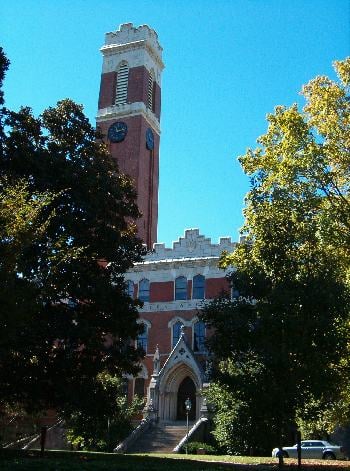
After a fire, Old Main hall was rebuilt with one tower and renamed Kirkland Hall. It is currently home to Vanderbilt's administration.
Since the opening of the university in 1875, only eight individuals have served as chancellors.[96] Landon Garland was the university's first chancellor, serving from 1875 to 1893.[96] Garland organized the university and hired its first faculty. Garland Hall, an academic building on campus, is named in his honor.[96]
The next chancellor was James Kirkland—serving from 1893 to 1937, he had the longest tenure of any Vanderbilt chancellor.[96] He was responsible for severing the university's ties with the Methodist Church and relocating the medical school to the main campus.[96] Vanderbilt's Main Building was renamed Kirkland Hall after Kirkland left in 1937.[96]
The longest-tenured chancellor was followed by one of the shortest-tenured.[96] Oliver Carmichael served Vanderbilt for just nine years, 1937 to 1946.[96] Carmichael developed the graduate school, and established the Joint University Libraries for Vanderbilt, Peabody, and Scarritt College.[96] Carmichael Towers, a set of high-rise dormitories on the northern edge of campus, were named for Chancellor Carmichael.[96]
Carmichael's successor was Harvie Branscomb.[96] Branscomb presided over a period of major growth and improvement at the university that lasted from 1946 until 1963.[96] He was responsible for opening the admissions policy to all races.[96] Branscomb Quadrangle is a residence hall complex named for the chancellor.[96]
Alexander Heard, for whom the campus's 10-library system (with 3.3 million total volumes) is named, served as chancellor from 1963 to 1982.[96] During his 20-year tenure, the Owen Graduate School of Management was founded, and Vanderbilt's merger with Peabody College was negotiated.[96] He also survived calls for his ouster because of his accommodating stance on desegregation.[96]
Joe B. Wyatt was the chancellor who served immediately after Heard, from 1982 until 2000.[96] Wyatt oversaw a great increase in the university's endowment, an increase in student diversity, and the renovation of many campus buildings.[96] Wyatt placed great emphasis on improving the quality of faculty and instruction, and during his tenure Vanderbilt rose to the top 25 in the *U.S. News & World Report'*s annual rankings for the first time.[97] The Wyatt Center on Peabody's campus is named for Wyatt and his wife.
After Gordon Gee's departure in 2007, Zeppos was named interim chancellor.[99] He was named chancellor suo jure on March 1, 2008, by the university's Board of Trust.[100] In April 2019, Zeppos announced his intention to resign from the chancellorship in the following August because of health problems.[101]
Medical Center
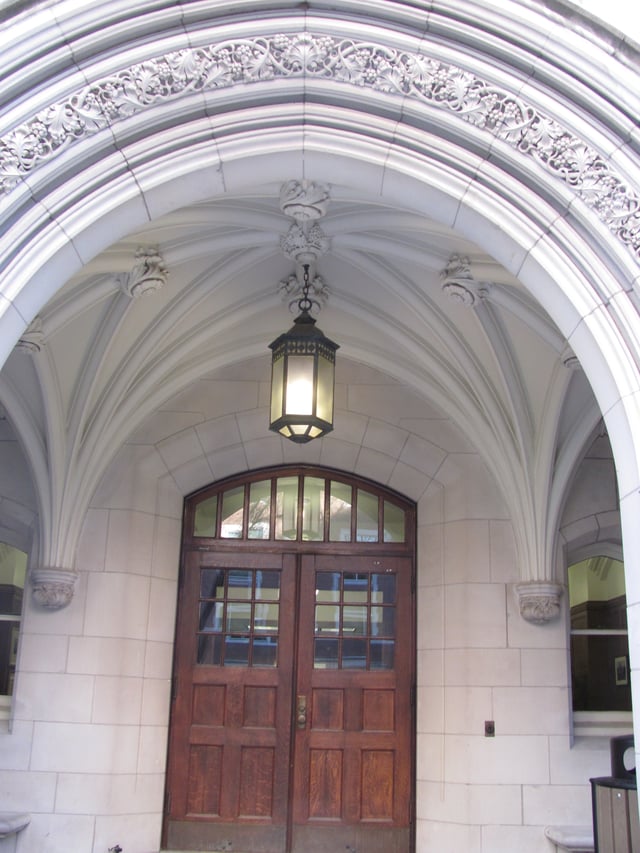
The entrance of Vanderbilt Medical School
Until April 2016 Vanderbilt University Medical Center (VUMC) was a component of the university, but is now an independent organization. The Medical Center continues to cooperate with the university and many clinical staff serve as faculty members at Vanderbilt University School of Medicine and Vanderbilt University School of Nursing.[102] As of April 2016, VUMC comprised the following units: Vanderbilt University Hospital, Monroe Carell, Jr., Children's Hospital at Vanderbilt, Vanderbilt-Ingram Cancer Center, Vanderbilt Psychiatric Hospital, Vanderbilt Clinic, Vanderbilt Bill Wilkerson Center, Vanderbilt Stallworth Rehabilitation Hospital, Eskind Biomedical Library, Vanderbilt Sports Medicine, Dayani Human Performance Center, Vanderbilt Page Campbell and Heart Institute.[103]
Before splitting with VUMC, Vanderbilt was the largest private employer in Middle Tennessee and the second largest in the state with over 23,000 employees.[104][105] Approximately 74% of the university's faculty and staff were employed by the Medical Center.[8] In 2008, the medical center was placed on the Honor Roll of *U.S. News & World Report'*s annual rating of the nation's best hospitals, ranking 15th overall in the country.[106]
Students and faculty
Profile
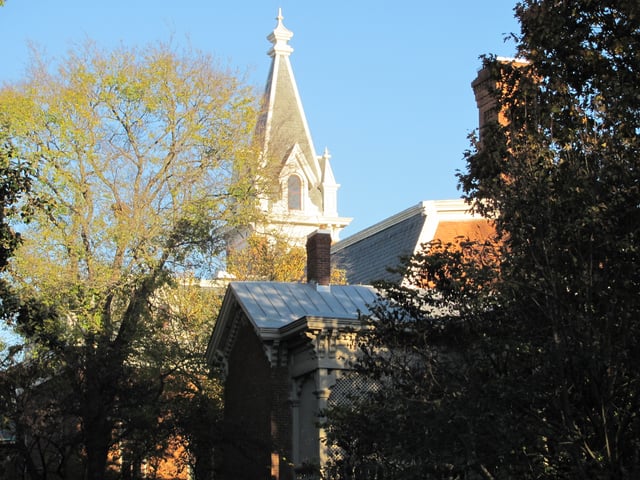
Benson Science Hall, one of the first campus buildings, houses the English and history departments.
As of 2018, Vanderbilt had an enrollment of 6,861 undergraduate and 5,963 graduate and professional students, for a total of 12,824 students.[107] Students from all 50 states and more than 100 countries attend Vanderbilt, with 67% of the total student body coming from outside the South and 9% from outside of the United States.[6] Moreover, 10.1% of the class was classified as Hispanic, 11.9% Black or African American, 15.4% Asian, and 5.6% other/two or more races; 12.4% of the class is international.[108] As of 2018, the incoming class was 49% male and 51% female[6] In 2018, Vanderbilt accepted 9.6% of its 34,313 freshman applicants, making it one of the most selective universities in the country.[109] 89% of Vanderbilt's students graduate in four years and 94% within six years.[107] 97% of first-years return for their second year.[107]
Vanderbilt lets undergraduates choose among 70 majors, or create their own, in its four undergraduate schools and colleges: the College of Arts and Science, the School of Engineering, Peabody College of Education and Human Development, and Blair School of Music.[8] The university also has six graduate and professional schools, including the Divinity School, Graduate School, Law School, School of Medicine, School of Nursing, and Owen Graduate School of Management.[8] As of 2018, Vanderbilt has a student-to-faculty ratio of 7:1.[18]
The university's undergraduate programs are highly selective: in 2019, the Office of Undergraduate Admissions accepted 6.3% of its 32,967 Regular Decision applicants, thus making Vanderbilt one of the most selective universities in the United States and the most selective university in the state of Tennessee.[110][111] In 2015, Vanderbilt was ranked fifth overall and fourth among private universities in enrollment of National Merit Scholars, according to the National Merit Scholarship Corporation's annual report.[112] In its most recent annual comparison of admissions selectivity, The Princeton Review gave Vanderbilt a rating of 99 out of 99.[113] The class of 2022 included 192 National Merit Scholars and 116 valedictorians or salutatorians. Additionally, the class had standardized test scores that were well above average: the interquartile range (25th percentile – 75th percentile) of SAT scores was 1450–1560, while the interquartile range of ACT scores was 33–35.[109] For students of the class of 2016 whose schools reported exact class rankings, 96.21% ranked in the top 10% of their class, with an average rank of 3.39%.[114]
Research
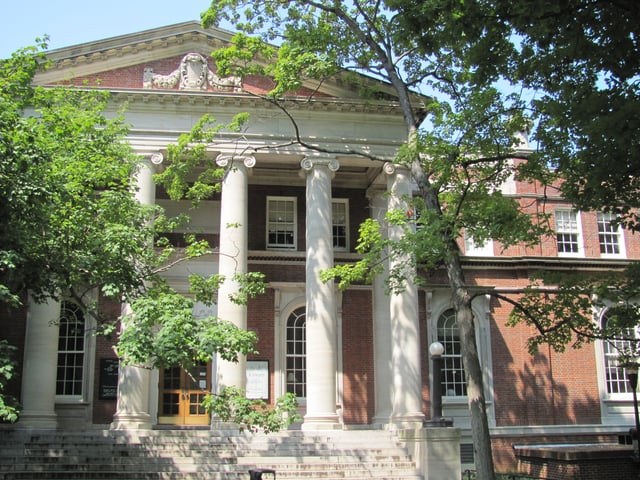
Peabody Library, Vanderbilt University
Vanderbilt investigators work in a broad range of disciplines, and the university consistently ranks among the top 20 research institutions in the United States.[115][116] In 2013, Vanderbilt University was ranked 9th in the country in funding from the National Institutes of Health.[117] Its Institute for Space and Defense Electronics, housed in the Department of Electrical Engineering and Computer Science, includes the largest academic facility in the world involved in radiation-effects research.[118]
Among its more unusual activities, the university has institutes devoted to the study of coffee and of bridge.[119] Indeed, the modern form of the latter was developed by Harold Stirling Vanderbilt, a former president of the university's Board of Trust and a great-grandson of the Commodore.[119] In addition, in mid-2004 it was announced that Vanderbilt's chemical biology research may have serendipitously opened the door to the breeding of a blue rose, something that has long been coveted by horticulturalists and rose lovers.[120]
In 2010, the Center for Intelligent Mechatronics at Vanderbilt began testing a powered exoskeleton intended to assist paraplegics, stroke victims and other paralyzed or semi-paralyzed people to walk independently.[121] The Vanderbilt exoskeleton received funding from Parker Hannifin Corporation in 2012 and has since gone to market internationally.[122]
Vanderbilt's research record is blemished, however, by a study university researchers, in conjunction with the Tennessee Department of Health, conducted on iron metabolism during pregnancy in the 1940s.[125] Between 1945 and 1949, over 800 pregnant women were given radioactive iron. Standards of informed consent for research subjects were not rigorously enforced at that time,[2] and many of the women were not informed of the potential risks. The injections were later suspected to have caused cancer in at least three of the children who were born to these mothers.[126] In 1998, the university settled a class action lawsuit with the mothers and surviving children for $10.3 million.[127]
The university is classified by the Carnegie Foundation as a Doctoral University with Highest Research Activity.[128] The university has a comprehensive graduate program, offering doctoral programs in sciences, engineering, mathematics, humanities, social sciences, and religion, along with professional degrees in medicine, business, law, nursing, and education.[129]
Vanderbilt is a member of the SEC Academic Consortium. Now renamed the SECU, the initiative was a collaborative endeavor designed to promote research, scholarship, and achievement among the member universities in the Southeastern Conference. The SECU's goals include highlighting the endeavors and achievements of SEC faculty, students, and universities and advancing the academic reputation of SEC universities.[130][131]
In 2013, Vanderbilt University participated in the SEC Symposium in Atlanta, Georgia, which was organized and led by the University of Georgia and its Bioenergy Systems Research Institute. The topic of the symposium was titled "The Impact of the Southeast in the World's Renewable Energy Future".[132]
Rankings

Built in 1880 with funding from William Henry Vanderbilt, The Old Gym now houses the Office of Undergraduate Admissions.
Vanderbilt is ranked the 121st best university in the world in the Times Higher Education World University Rankings,[133] and 32nd in the United States by the Academic Ranking of World Universities.[134] U.S. News & World Report ranks it the 15th best university nationally,[135] and Reuters ranked it the 10th most innovative university in the world.[136]
In its 2018 edition, U.S. News & World Report ranked Vanderbilt 14th among all national universities.[148] In the same publication's graduate program rankings, the Peabody College of Education was ranked third in the nation among schools of education,[149] and the Vanderbilt Law School was listed at 16th, the School of Medicine was listed at 15th among research-oriented medical schools, the School of Nursing was listed at 15th, the School of Engineering was listed at 34th, and the Owen Graduate School of Management was listed at 25th among business schools.[150] Additionally, U.S. News & World Report ranked Vanderbilt first in the nation in the fields of special education, educational administration, and audiology.[150] In 2014, the Owen Graduate School of Management was ranked 30th by Bloomberg Businessweek among full-time MBA programs.[151]
The Academic Ranking of World Universities ranks Vanderbilt as the 60th-best university in the world. Additionally the ARWU Field rankings in 2015 placed Vanderbilt as 18th best in the world for Clinical Medicine and Pharmacy, and 21st in Social Sciences.[152] In the Times Higher Education 2016 World University Rankings, Vanderbilt is 87th. The 2017/2018 QS World University Rankings ranked Vanderbilt 212th in the world. Human Resources & Labor Review, a national human competitiveness index & analysis, ranked the university as one of 50 Best World Universities in 2011.[153] The 2007 Faculty Scholarly Productivity Index, a measure of the scholarly output of the faculty of nearly 7,300 doctoral programs around the United States, ranked Vanderbilt 8th among large research universities, and 1st in the areas of comparative literature, educational leadership, pharmacology, Portuguese, Spanish, and special education.[154] Poets & Writers ranked Vanderbilt's English Department's MFA Program in Creative Writing 18th among the top 50 writing programs in the United States in 2010 and 14th in the United States in 2011.[155] Fortune magazine ranked Vanderbilt among the top 100 places to work in the United States, the only university on their list[156] In 2017, Money ranked Vanderbilt the 15th best college in the nation among national universities, liberal arts colleges, and service academies[157] In 2018, Kiplinger's listed Vanderbilt as one of the top five private universities in value and one of the top ten overall.[158]
Vanderbilt does well in non-academic rankings as well. In 2017 alone, the university was ranked #1 for happiest students, #2 for quality of life, #5 for most beautiful campus, and #5 for best-run college according to Princeton Review.[159] In 2016, the university was listed by Travel + Leisure as having one of the most beautiful campuses in the country.[160] In 2016, Vanderbilt was ranked the third most intense college in the nation by Business Insider.[161] In 2018, the magazine listed Vanderbilt as the fifth smartest college in America.[162]
Campus layout
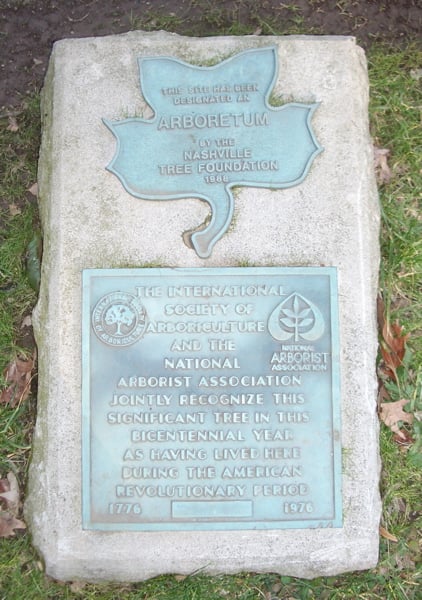
Vanderbilt's campus is a designated national arboretum.
The Vanderbilt campus is located approximately 1.5 miles (2.4 km) southwest of downtown in the West End neighborhood of midtown Nashville. It has an area of 330 acres (1.3 km2), though this figure includes large tracts of sparsely used land in the southwest part of the main campus, as well as the Medical Center.[166] The historical core of campus encompasses approximately 75 acres (0.3 km2).[167]
The oldest part of the Vanderbilt campus is known for its abundance of trees and green space, which stand in contrast to the surrounding cityscape of urban Nashville.[168] The campus was designated as a national arboretum in 1988 by the Association of Botanical Gardens and Arboreta, and approximately 190 species of trees and shrubs can be found on campus.[168] One tree, the Bicentennial Oak between Rand Hall and Garland Hall, is certified to have lived during the American Revolution and is the oldest living thing on the campus.[168] In December 2015, a hackberry tree fell, leaving 10 students injured with "broken bones and stitches."[169][170]
Main campus
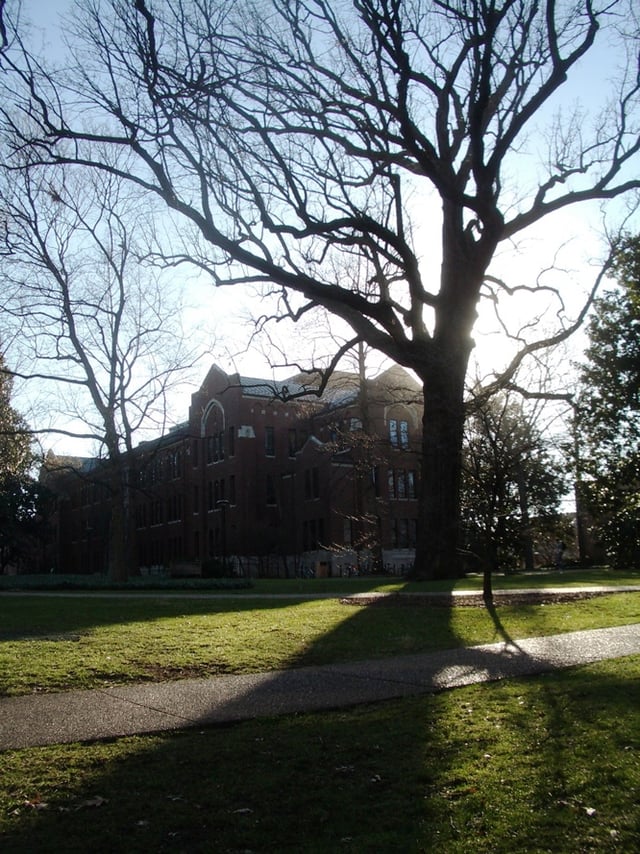
Bicentennial Oak, facing Buttrick Hall, predates the Revolutionary War.
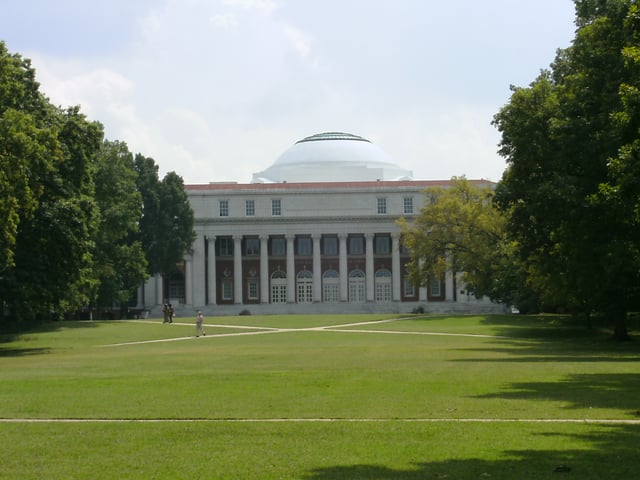
The Wyatt Center on Vanderbilt's Peabody campus
In the northeast corner of the campus (the base of the fan) is the original campus.[171] This section stretches from West End Avenue south to the Stevenson Center and west from 21st Avenue to Alumni Lawn. The majority of the buildings of the arts and humanities departments of the College of Arts and Science, as well as the facilities of the law school, Owen Graduate School of Management, and the divinity school, are located in the original campus. Additionally, the Heard Central Library and Sarratt Student Center/Rand Hall can be found on the original campus.[171]
Flanking the original campus to the south are the Stevenson Center for Science and Mathematics—built on a woodland once known as the Sacred Grove[172]—and the School of Engineering complex (Jacobs Hall-Featheringill Hall). Housing the Science Library, the School of Engineering, and all the science and math departments of the College of Arts and Science, this complex sits between the original campus and the Medical Center.[171] The Vanderbilt University Medical Center itself takes up the southeastern part of the campus.[171] Besides the various associated hospitals and clinics and the facilities of the Schools of Medicine and Nursing, the medical center also houses many major research facilities.
West of the original campus and the Medical Center, Greek Row and the bulk of the Vanderbilt residence halls are found.[171] From north to south, Carmichael Towers, Greek Row, Branscomb Quadrangle, and Highland Quadrangle house the vast majority of on-campus residents in facilities ranging from the double-occupancy, shared-bathroom dorms in Branscomb and Towers to the apartments and lodges in Highland Quadrangle.[171] There are 20 residence halls and apartments across both campuses.[107]
The design of the campus and buildings can be described as eclectic, with buildings of various styles and eras. The original 75 acre campus included 11 structures situated along ridge lines with sprawling views of downtown Nashville. The campus gates were located off Vanderbilt Avenue (later to become 21st Avenue). Currently four of the original eleven campus structures still exist. In recent years campus planners have strived to preserve the landscape and buildings of the original core and maintain a compact, walkable campus.[173]
Peabody campus
Directly across 21st Avenue from the Medical Center sits the campus of the Peabody College of Education and Human Development.[171] The design of the Peabody campus was inspired by the classical lines of Thomas Jefferson's design for the University of Virginia and the architecture of the 1893 World's Columbian Exposition in Chicago, Illinois. The National Historic Landmarks program designated the central lawn and surrounding buildings as a historic district in 1965.[174] The Peabody campus is the location of the Martha Rivers Ingram Commons freshman residences.
Student life
Residential college system
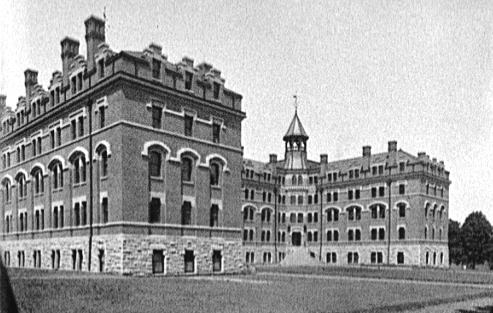
Kissam Hall was a men's dormitory from 1901 until it was demolished in 1958. The baths were all in the basement.

The Commons Center dining hall
In the early 2000s Vanderbilt made a decision to convert its residence halls into an academic residential college system.[79][9] The intent is to form "a cohesive and growing network of residences that spark creativity, build community, support student success, and extend educational opportunities beyond the classroom."[10] The first phase of this conversion was opening in 2008 of The Martha Rivers Ingram Commons, which brought together all first-year students in 10 adjacent houses, each house guided by a faculty head of house, living among the students in a faculty apartment. It is planned that in their sophomore year, students will enter a Residential College that will be their home for the remainder of their undergraduate years. This residential option expands on the experience provided during students' first year on The Commons. The first two upperclass colleges are Warren College and Moore College, which opened in 2014.[10] They were constructed on the site of pre-existing dormitories known as the Kissam Quadrangle[175] E. Bronson Ingram College, on the site of the former Vanderbilt and Barnard Halls, opened in 2018.[10][80] Additional colleges are being constructed at the site of Carmichael Towers so that all upperclass students will reside in college.[10][80] The new College Halls are intended to complement the earlier communities, The McGill Project, Mayfield Lodges, and McTyeire International House.[10]
Two of the new residence halls have received LEED silver certification and the new Commons Dining Center has received gold certification, making Vanderbilt the only university in the state to be recognized by the U.S. Green Building Council.[176][177] The university expects all five of the new residence halls and one renovated residence hall to eventually receive LEED recognition.[178] The total cost of The Commons construction project is expected to be over $150 million.[179]
Generally, undergraduate students are required to live in dorms on campus, with first-year students all living in the ten resident halls of The Martha Rivers Ingram Commons and all upperclassmen living on the main campus.[180] Exceptions are made for students living with relatives in Davidson County, students with health exemptions, married students, and some students with senior standing.[180]
Organizations

Sailing Club Regatta

Occupy Vanderbilt encampment, March 2012.
The university has over 430 student organizations, ranging from academic major societies and honoraries to recreational sports clubs, the oldest of which is the Vanderbilt Sailing Club.[181]
One publication, The Vanderbilt Hustler, was established in 1888 and is the oldest continuously published newspaper in Nashville.[182] In Langford v. Vanderbilt University (1956), a student sued the university for libel;[183] the Tennessee court dismissed the lawsuit, concluding the university was not the owner of the newspaper.[184] Additional student publications include those published by the College of Arts & Science, such as the Vanderbilt Political Review and the Vanderbilt Historical Review, as well as the Vanderbilt University Law School, which publishes three law reviews; the flagship journal is the Vanderbilt Law Review. The on-campus radio station, WRVU, represents the student body by playing a range of music from bluegrass to choral, with a focus on non-mainstream music.[185]
Vanderbilt also has a large performing arts community spanning every genre of the arts with multiple organizations representing each category. There are dance groups covering contemporary, tap, hip hop, Latin, and Bhangra styles as well as numerous theatre, improvisation, spoken word, music and singing groups including the 2014 Sing-Off champion male a cappella group, The Melodores.[186] Performing arts organizations comprise over 1,000 students and are represented by the Vanderbilt Performing Arts Community, which supports groups by sponsoring performances and awards.
Vanderbilt's Programming Board, a student-run organization, is known for producing and running the Rites of Spring Music Festival, a tradition spanning over 30 years.[187]
In 2012, students took part in the Occupy movement on campus. They pitched tents outside Kirkland Hall.
In 2016, students took part in the Sanctuary Campus movement, calling on Vanderbilt not to take part in mass deportations or Muslim registries. The administration eventually complied with such demands.
The student body is governed by Vanderbilt Student Government, which includes Senate, Judicial, and Executive Branches. This organization is responsible for the distribution of nearly $2 million in funds set aside by the university to fund student organizations. The VSG passed a bill in 2017 calling on Vanderbilt to divest from private prisons.[188]
Greek life
Honor code
Vanderbilt students are required to sign an Honor Code, agreeing to conform to a certain set of behaviors.[191][192] The honor code dates to 1875.[191] The Honor Committee, later renamed the Honor Council, was created in 1900.[191] The Honor Council comprises a student executive board and representatives from each class year; it enforces the Honor Code and informs members of the Vanderbilt community about the Honor System.[193] Violations can lead to discipline or expulsion from the university.[194] In 2009, a student sued the university over his expulsion.[194]
Dean of Students Madison Sarratt explained the honor code:
Today I am going to give you two examinations, one in trigonometry and one in honesty. I hope you will pass them both, but if you must fail one, let it be trigonometry, for there are many good men in this world today who cannot pass an examination in trigonometry, but there are no good men in the world who cannot pass an examination in honesty.[195]
Student controversies
In 1980, several Vanderbilt students, one of whom was African-American, decided to hold Nat Turner Day to protest Kappa Alpha Order's celebration of Old South Day, when KA brothers dressed as Confederate States Army personnel.[196] The university administrators sided with KA, banned Nat Turner Day, and let KA parade in their Confederate costumes.[197] The African-American student was called a homophobic slur and beaten up by the KA chapter.[197]
On September 9, 2007, a gay bashing occurred in the Towers West Quiznos on campus.[198] A student, Robert Gutierrez, and a non-student hurled homophobic abuse at two gay students and beat one of them up.[198] A report was filed with the Vanderbilt University Police Department, and Gutteriez was reportedly suspended, although it could not be confirmed.[199] Gutteriez dismissed it as "just a fight",[199] but the Dean of Students suggested it was "a premeditated, unprovoked attack."[198] The victims were not named to protect their anonymity.[199]
In the wake of a U.S. Supreme Court decision in 2011, four Christian student organizations were placed on probation due to non-compliance with the university's nondiscrimination policy, which requires student groups to accept all students and forbids them from requiring that their officers share the "beliefs, goals and values" embodied in the group.[204] Controversy continued to surround this issue throughout 2011 and 2012, culminating in a proposed state law exempting student organizations from nondiscrimination policies. Although the bill passed both houses of the Tennessee Legislature, it was vetoed by Governor Bill Haslam.[205]
In March 2015, three swastikas, a symbol of Nazi antisemitism, were found spray-painted in the elevator and basement inside the house of Alpha Epsilon Pi, one of the historically Jewish fraternities on campus.[206][207][208] The campus Hillel chapter called it "a malicious attack intended to bring to mind the horrors of the Holocaust, to force us to feel different, endangered and isolated."[209] The news, characterized as a "hate crime" by university officials, made national and international headlines, including in Israel.[206][207][208]
A 2015 survey reported that 20% of undergraduate students were sexually assaulted in 2014–2015.[210] Meanwhile, as of 2015, The Tennessean reports that the university is "under review by federal education officials, spurred by six current and former female students who filed a complaint about how Vanderbilt has handled cases of sexual misconduct."[210]
In April 2016 and June 2016, two former Vanderbilt football players were found guilty of charges related to the videotaped rape of an unconscious woman in a dorm room.[211] Cory Batey was convicted of aggravated rape, aggravated sexual battery, facilitation of aggravated rape, and attempted aggravated rape,[212] while Brandon Vandenburg was convicted of aggravated rape, aggravated sexual battery, and unlawful photography.[211][213] The two are among four former football players charged with crimes related to the case.[214]
Athletics

Vanderbilt's basketball teams play in Memorial Gymnasium.
| Men's | Women's |
|---|---|
| Baseball | Basketball |
| Basketball | Bowling |
| Cross country | Cross country |
| Football | Golf |
| Golf | Lacrosse |
| Tennis | Soccer |
| Swimming | |
| Tennis | |
| Track & Field |
Vanderbilt is a founding and charter member of the Southeastern Conference and for a half-century has been the conference's only private school.[215] The university fields six men's and ten women's intercollegiate teams and has won five NCAA championships.[216][217] With fewer than 6,900 undergraduates, the school is also the smallest in the conference; the SEC's next-smallest school, the Mississippi State University, has nearly twice as many undergraduate students. Additionally, the school has outside conference memberships in two women's sports that the SEC does not sponsor. The women's lacrosse team plays in the American Athletic Conference.[218] In bowling, a sport which the NCAA sanctions only for women, Vanderbilt is a member of the single-sport Southland Bowling League.[219] Conversely, Vanderbilt is the only SEC school not to field teams in softball and volleyball, but has discussed adding either or both sports in the future.[220]
In February 2016, the university was fined $100,000 by the Southeastern Conference after fans stormed the basketball court following a win.[223]
Athletics restructuring

Hawkins Field in June 2007
The university is unique in NCAA Division I in that for several years the athletics department was not administered separately from other aspects of campus life; Vice Chancellor David Williams, who was over intercollegiate athletics, also was university counsel and in charge of other aspects of undergraduate campus life such as intramural sports.[224] Despite fears that Vanderbilt would lose coaches and recruits or would be forced out of the SEC, the university experienced considerable success after the change; 2006–07 was one of the best in the school's athletic history. At one point, seven of Vanderbilt's 16 teams were concurrently ranked in the Top 25 of their respective sports.[225] Women's bowling won the NCAA championship, bringing the university its first team championship since the advent of the NCAA.[226] The baseball team qualified for the NCAA Super Regionals in 2004, had the nation's top recruiting class in 2005 according to Baseball America,[227] made the NCAA field again in 2006, and won the 2007 SEC regular-season and tournament championships. Vanderbilt was ranked first in most polls for a large portion of the 2007 season, and the team secured the top seed in the 2007 NCAA tournament.[228] In more recent years, the team has reached the pinnacle of college baseball winning the College World Series in both 2014 and 2019. The team’s triumph in 2014 was the school’s first national championship in a men’s sport.
Mascot
Vanderbilt's intercollegiate athletics teams are nicknamed the Commodores, in honor of the nickname given to Cornelius Vanderbilt, who made his fortune in shipping.[229] The term commodore was used by the Navy during the mid-to-late 19th century. A commodore was the commanding officer of a task force of ships, and therefore higher in rank than a captain but lower in rank than an admiral. The rank is still used by the British Royal Navy and other Commonwealth countries, but the equivalent modern-day rank in the U.S. Navy is rear admiral lower half. Since the term was used most during the 19th century, Vanderbilt's mascot, "Mr. C", is usually portrayed as a naval officer from the late 19th century, complete with mutton chops, cutlass, and uniform.
In addition to Mr. C, Vanderbilt fans often use the cheer "Anchor down!" accompanied by the "VU" hand sign, created by extending the thumb along with the index and middle fingers (essentially identical to the Serbian three-finger salute).[230]
Notable former faculty and alumni
Public service
Lamar Alexander (B.A. 1962) is a current U.S. Senator, former Governor of Tennessee, former United States Secretary of Education, and former U.S. presidential candidate; he filled the Senate seat left vacant by the retirement of Fred Dalton Thompson (J.D. 1971).[231] There has been at least one Vanderbilt graduate occupying a U.S. Senate seat for Tennessee since 1977. Other alumni who are current members of Congress include John Neely Kennedy (B.A. 1973), a Senator from Louisiana; French Hill (B.S. 1978), a Representative from Arkansas; Luke Messer (J.D. 1994), a Representative from Indiana; Leonard Lance (J.D. 1977), a Representative from New Jersey; and Steve Cohen (B.A. 1971), a Representative from Tennessee. Additionally, Greg Abbott, the 48th and current Governor of Texas, received his law degree from Vanderbilt in 1984. Two U.S. vice presidents, John Nance Garner and Al Gore, attended the university, but did not graduate.[232][233] However, Gore's ex-wife, Tipper, is herself an alumna, receiving a master's degree from Peabody in 1975.[234] Other alumni who are or have been involved in politics include Executive Vice President of the Cato Institute David Boaz (B.A. 1975),[231][235] White House Chief of Staff John R. Steelman (M.A. 1924), Civil Rights Movement activist James Lawson (M.Div. 1960), U.S. Secretary of Commerce Mickey Kantor (B.A. 1951), U.S. Secretary of the Treasury John Wesley Snyder (attended one year) and Watergate prosecutor James F. Neal (J.D. 1957).[236][237][238] Allan B. Hubbard (B.A. 1969) is a former Director of the National Economic Council.[239] William Hagerty (B.A. 1981, J.D. 1984) is the current U.S. Ambassador to Japan.[240] Bill Frist, a cardiothoracic surgeon and former U.S. Senate Majority Leader, is a faculty member at Vanderbilt University Medical Center. Floyd M. Riddick, a master's alum, served as Parliamentarian of the United States Senate. John J. Tigert (B.A. 1904) was the seventh United States Commissioner of Education.[241] Horace Harmon Lurton was serving as the dean of Vanderbilt Law School when he was appointed to a seat on the Supreme Court of the United States in 1909.[242] He was ultimately succeeded by former United States Supreme Court Associate Justice and former Attorney General James Clark McReynolds (B.S. 1882).[243] Bill Haslam, the 49th Governor of Tennessee, is a visiting professor of political science at Vanderbilt.[244] Jack Watson (B.A. 1960) served as Jimmy Carter's campaign finance chairman and then as his Chief of Staff.[245] Paul C. Ney Jr. (J.D./M.B.A. 1984) is a former adjunct professor at Vanderbilt Law School and the current General Counsel of the Department of Defense.[246] Jacob M. Dickinson taught at Vanderbilt Law School and later served as the 44th United States Secretary of War.[247] Multiple leaders in foreign government are alumni. Thomas Jefferson (M.A. 1975) served as the first Premier of the Cayman Islands;[248] Abdiweli Mohamed Ali, former Prime Minister of Somalia and former President of Puntland received his master's degree from Vanderbilt; Chung Won-shik, former Prime Minister of South Korea, is a master's and doctorate alum; Yeda Crusius, former governor of the Brazilian state Rio Grande do Sul, received a master's degree in economics from Vanderbilt; Redley A. Killion, former Vice President of Micronesia, and Pedro Pinto Rubianes, former Vice President of Ecuador, are both Vanderbilt master's alums.[249][250] Vanderbilt is also represented in other leadership positions in foreign nations. Abdallah Kigoda, a master's alum, served as the Minister of Industry and Trade of Tanzania; Süreyya Serdengeçti, a master's alum, is a former Governor of the Central Bank of Turkey;[251] Wang Tso-jung was the former President of the Control Yuan of the Government of the Republic of China;[252] and Kwon Hyouk-se is the current governor of the Financial Supervisory Service of South Korea.[253][250] Baso Sangqu, a master's alum, is a former President of the United Nations Security Council and currently serves as the permanent representative of South Africa to the United Nations.[254] Charlie Soong (B.Th 1885) was a Chinese missionary who played a significant role in the Xinhai Revolution.[255]
Business
Within the business world, Vanderbilt counts seven billionaire alumni, among many others who have gone on to serve in a number of key leadership roles; alumni include Ann S. Moore (B.A. 1971), former Chairman and CEO of Time Inc.; Emily White (B.A. 2000), former COO of Snapchat; Doug Parker (M.B.A. 1986), President and CEO of American Airlines Group; Matthew J. Hart (B.A. 1974), former CEO of Hilton Hotels; Cotter Cunningham (M.B.A. 1991), current CEO of RetailMeNot; Jeffrey J. Rothschild (B.A. 1977, M.S. 1979), founding engineer of Facebook; Alexander C. Taylor (B.S. 1997), President and CEO of Cox Enterprises; and David Farr (M.B.A. 1981), CEO of Emerson Electric.[256][257][258][259] Vanderbilt also has an intimate connection to the contemporary management consulting industry. In particular, the founders of two of the three most prominent management consulting firms graduated with undergraduate degrees from the university. Bruce Henderson, founder of The Boston Consulting Group, graduated with a degree in mechanical engineering in 1937 and taught at the Owen Graduate School of Management,[260] while Bill Bain, founder of Bain and Company, graduated in 1959 with Phi Beta Kappa honors in history. Thomas W. Beasley, the co-founder of CoreCivic, graduated from the Vanderbilt Law School; he has been honored as a Distinguished Alumnus.[75][261] Adena Friedman, a graduate of Vanderbilt's business school, is the CEO of NASDAQ. Mark L. Feidler (J.D. 1981) is the current chairman of Equifax. Thomas F. Frist Jr. (B.A. 1960) is a co-founder of HCA Healthcare and the wealthiest person in Tennessee.[262][263] Ralph Owen (B.A. 1928) served as Chairman of American Express.[264] William S. Vaughn (B.A. 1923) served as both President and Chairman of Eastman Kodak.[265] Mark Reuss (B.E. 1986) is the President of General Motors.[266] John D. Arnold (B.A 1995) is a former hedge fund manager and the youngest self-made billionaire in Texas.[267] Igor Ansoff, Founding Dean of Vanderbilt's business school, is known as the father of strategic management.[268] Ross Perot Jr. (B.A. 1981) is the former owner of the Dallas Mavericks and chairman of Perot Systems. Michael Burry (M.D. 1997) is a former hedge fund manager and one of the first investors to recognize and profit from the subprime mortgage crisis.[269] Christopher J. Wiernicki (B.E. 1980) is the Chairman, President, and CEO of the American Bureau of Shipping.[270] Michael Ainslie (B.A. 1965) is the former President & CEO of Sotheby's.[271]
Academia
Richard Weaver (M.A. 1934), a famed political philosopher, taught English at the University of Chicago.[272] D. M. Smith (B.A. 1908, M.A. 1910) chaired the mathematics department at Georgia Institute of Technology and was a charter member of the American Mathematical Society.[273] Henry Manne (B.A. 1950), a writer and academic, was considered one of the founders of the law and economics movement.[274] Sheldon Hackney (B.A. 1955) is a former President of the University of Pennsylvania and Chairman of the National Endowment for the Humanities.[275] H. Houston Merritt (B.S. 1922) was a pioneering neurologist and dean of The College of Physicians and Surgeons at Columbia University.[276] Charles Plosser (B.A. 1950) served as the dean of the Simon Graduate School of Business Administration at the University of Rochester and as the President of the Federal Reserve Bank of Philadelphia.[277] Don K. Price (B.A.1931) was the founding Dean of Harvard University's John F. Kennedy School of Government.[278] Herman Daly (Ph.D. 1967) worked for the World Bank as a Senior Economist and taught public policy at the University of Maryland, College Park.[279] Paul Hudak (B.S. 1973), known for his involvement in the design of the Haskell programming language, was a professor and chair of the department of computer science at Yale University.[280] Roger Groot (B.A. 1962) was a legal consultant and professor of law at Washington and Lee University.[281] Markus Brunnermeier (M.A. 1994), Guggenheim Fellow, holds the Edwards S. Sanford Professorship at Princeton University.[282] Cleanth Brooks (B.A. 1928) was a renowned literary critic and Professor of English at Yale University.[283] Antonio Gotto (B.A. 1957, M.D. 1965) served as the Dean of Weill Medical College of Cornell University.[284] Sheryll Cashin (B.A. 1984) acted as an advisor to the Clinton Administration and currently serves as a law professor at Georgetown University.[285] Elyn Saks (B.A. 1977), a mental health law expert and MacArthur Fellow, teaches law at the University of Southern California.[286] Mriganka Sur (M.S. 1975, Ph.D 1978), is the Newton Professor of Neuroscience at the Brain & Cognitive Science and the director of the Simons Center for the Social Brain at the Massachusetts Institute of Technology.[287][288] J. Davy Kirkpatrick (B.S. 1986) is an astronomer at the Infrared Processing and Analysis Center at the California Institute of Technology whose research was named one of the Top 100 Stories of 2011 by Discover Magazine.[289] David Stuart (Ph.D. 1995), now a professor of art history at the University of Texas at Austin, is the youngest person in history to win a MacArthur Fellowship at the age of 18.[290][291][292]
The sciences
Three alumni, biochemist Stanford Moore (B.A. 1935), economist and microcredit pioneer Muhammad Yunus (Ph.D. 1971), and former Vice President Al Gore have won the Nobel Prize.[293][294] Four current or former members of the faculty also share that distinction: biochemist Stanley Cohen, physiologist Earl Sutherland, and pioneer molecular biologist Max Delbrück;[8] Nobel laureate and neuroscientist Paul Greengard was a visiting scholar. Alain Connes and Vaughan Jones, both Fields Medalists, are Distinguished Professors of Mathematics at the university. Norman Shumway (M.D. 1949) taught at Stanford Medical School and was the first person to perform a successful heart transplant in the United States. Mildred T. Stahlman (M.D. 1946) founded the first Neonatal Intensive Care Unit (NICU) in the world. Kenneth C. Catania, a current member of Vanderbilt's biological sciences faculty, was awarded a MacArthur Fellowship in 2006 and a Guggenheim Fellowship in 2014; since then, much of his work has been covered in the popular press. Nicholas Hobbs, former provost, served as president of the American Psychological Association. Edward Emerson Barnard (B.A. 1887) found Barnard's Star, Jupiter's fifth moon, nearly a dozen comets, and nebulous emissions in supernovae. Douglas Vakoch, a former postdoctoral fellow at Vanderbilt, is founder and president of METI (Messaging Extraterrestrial Intelligence).[295] Levi Watkins (M.D. 1970), professor and Associate Dean of the Johns Hopkins School of Medicine, was the first to successfully implant an automatic defibrillator in a human patient.[296] J. Ridley Stroop (B.A. 1924, M.S. 1925) discovered the Stroop effect, which has been used in a variety of pop cultural formats and in academic and clinical testing. William R. Lucas (M.S., Ph.D.) served as the fourth Director of the NASA Marshall Space Flight Center.[297] Kimberly Bryant (B.E. 1989) is the founder of Black Girls Code.[298] G. Scott Hubbard (B.S. 1970), former director of NASA's Ames Research Center, is a professor of aeronautics and astronautics at Stanford University[299] and chairman of the SpaceX Safety Advisory Panel.[300] Francis G. Slack, a former associate professor of physics at Vanderbilt, played a critical role in the Manhattan Project and was a member of the team at Columbia University that performed the first nuclear fission experiment in the United States.[301] Michael Kearney (M.E. 2002) was the youngest person in world history to attain a college degree, having done so at the age of ten.[302] Carl Keenan Seyfert, the first Director of the Dyer Observatory and an astronomy professor at Vanderbilt, discovered Seyfert galaxies and Seyfert's Sextet.[303]
Literature and journalism
Most notably, the Southern Agrarians were a group of influential American writers and poets in the 1920s and 1930s based at Vanderbilt. Three U.S. Poets Laureate are Vanderbilt alums: Allen Tate (B.A. 1922), Robert Penn Warren (B.A. 1925), and Randall Jarrell (M.A. 1938). Warren later went on to win the Pulitzer Prize for fiction and for poetry. Novelists James Dickey (B.A. 1949) and James Patterson (M.A. 1970) also graduated from Vanderbilt.[304] Louis R. Harlan (M.S. 1948) won the 1984 Pulitzer Prize and the Bancroft Prize in both 1973 and 1984.[305] Ralph McGill (B.A. 1916), a noted anti-segregationist editor, won a Pulitzer Prize in 1959.[306] Jon Parrish Peede (B.S. 1991) is the chairman of the National Endowment for the Humanities.[307] Wendell Rawls Jr. (B.A. 1963) is a Pulitzer Prize-winning investigative reporter and editor. Two well-known sportswriters, Grantland Rice (B.A. 1901) and Fred Russell (B.A. 1927), have a scholarship named after them at the university,[308] and Buster Olney (B.A. 1988) writes for ESPN.com and The New York Times.[309] Journalist David Brinkley attended briefly.[310] Skip Bayless (B.A. 1974), formerly of ESPN First Take, attended Vanderbilt as a recipient of the Russell-Rice scholarship.[309] Willie Geist (B.A. 1997) is a host of MSNBC's Morning Joe. Vanderbilt alumna Hildy Kuryk is the director of communications at Vogue and former senior New York finance consultant for Barack Obama's 2008 presidential campaign.[311][312][313] Zhubin Parang (B.A. 2003) is the head writer of The Daily Show.[314]
Athletics
Miami Dolphins quarterback Jay Cutler (B.S. 2005) is also a Vanderbilt alum and was drafted in the first round of the 2006 NFL Draft by the Denver Broncos. Other Vanderbilt alumni in the NFL include Minnesota Vikings defensive end Stephen Weatherly (B.A. 2016), San Francisco 49ers wide receiver Jordan Matthews (B.A. 2014), Los Angeles Chargers defensive back Casey Hayward (B.A. 2012), Arizona Cardinals wide receiver Trent Sherfield (B.A. 2018), and Houston Texans linebacker Zach Cunningham.[315][316][317][318] Bill Wade (B.A. 1952), the first overall pick in the 1952 NFL Draft, led the Chicago Bears to a win in the 1963 NFL Championship.[319] Vanderbilt also produced the first overall draft picks of Major League Baseball in 2007 and 2015, with David Price and Dansby Swanson, the second overall draft pick of Major League Baseball in 2008 with Pedro Alvarez and the seventh overall draft pick in 2009 with Mike Minor. Price, Alvarez and Minor were drafted by the then-named Tampa Bay Devil Rays, Pittsburgh Pirates and Atlanta Braves, respectively. Pitcher Josh Zeid made his major league debut with the Houston Astros in 2013. Walker Buehler (B.A. 2016) is a starting pitcher for the Los Angeles Dodgers. ESPN basketball analyst Carolyn Peck was a standout member of the Commodores' basketball program from 1985–1988, eventually becoming a head coach and leading the Purdue Boilermakers women's basketball team to a national championship in 1999. Festus Ezeli (B.A. 2012) won an NBA championship with the Golden State Warriors. Vanderbilt alumni in the NBA include Golden State Warriors power forward and center Damian Jones (B.A. 2017), Cleveland Cavaliers point guard Wade Baldwin IV (B.A. 2018), and New York Knicks power forward and center Luke Kornet (B.A. 2017).[320][321][322] Will Perdue (B.A. 1988) won four NBA championships with the Chicago Bulls in the 1990s. Brandt Snedeker (B.A. 2002) was the PGA Tour Rookie of the Year in 2007. Jeff Turner (B.A. 1984) played for the New Jersey Nets and the 1984 United States men's Olympic basketball team, which won the gold medal.[323] Shannon Vreeland won a gold medal in the 4×200-meter freestyle relay at the 2012 Summer Olympics with the United States.[324]
Music and entertainment
Many of its alumni became involved in the music industry, likely given the university's location in Nashville. Dinah Shore (B.A. 1938), Rosanne Cash (B.A. 1979), Amy Grant (B.A. 1982), and Dierks Bentley (B.A. 1997) are all alumni.[304] Shore later went on to star in a variety of films and radio and television series; other Vanderbilt alumni with Hollywood connections include Academy Award-winners Delbert Mann (B.A. 1941) and Tom Schulman (B.A. 1972) and Joe Bob Briggs (B.A. 1974).[304][309] Amy Ray (B.A. 1986) is a singer-songwriter and a member of the Indigo Girls. Scott Siman (B.A. 1976) is a music executive who oversaw the rise of Tim McGraw and Julianne Hough. R. Stevie Moore (B.A. 1974) pioneered lo-fi and modern indie music and is one of the most recognized artists of the cassette underground.
See also
Latin American Public Opinion Project
Rites of Spring Music Festival
Southern Ivy
